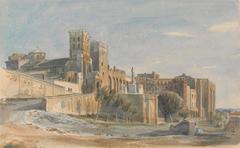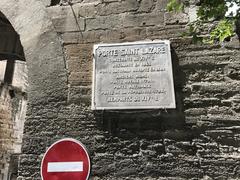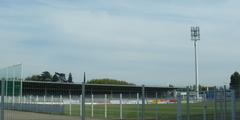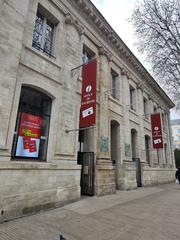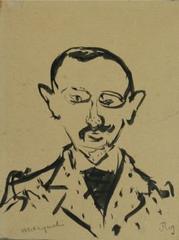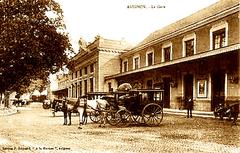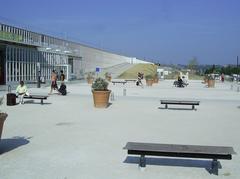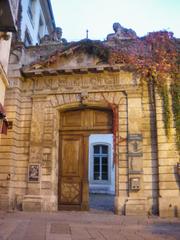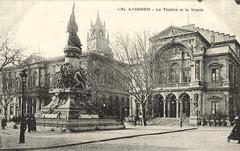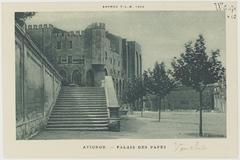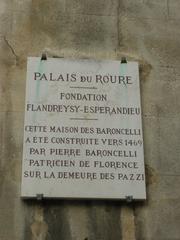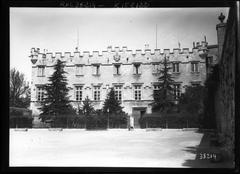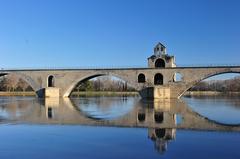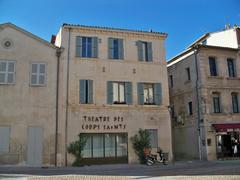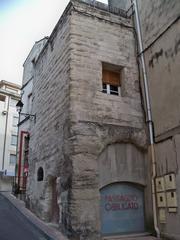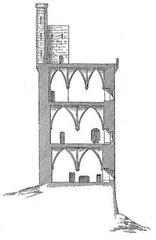Pierre Boulle Avignon Visiting Hours, Tickets, and Historical Significance Guide
Date: 14/06/2025
Introduction to Pierre Boulle’s Avignon Legacy
Located in the heart of Provence, Avignon is celebrated for its medieval architecture and vibrant cultural history. It is also the birthplace of Pierre Boulle, one of France’s most acclaimed authors, whose novels The Bridge on the River Kwai and Planet of the Apes have had a profound impact on global literature and cinema. This guide provides an in-depth look at Boulle’s life, the key Avignon sites linked to his legacy, and practical information for visitors keen to explore the city’s literary and historical treasures (Avignon Cité Millénaire, Avignon Tourism Official Site, Wikipedia).
Contents
- Introduction to Pierre Boulle’s Avignon Legacy
- Early Life and Family Background
- Education and Formative Career
- World War II: Resistance and Captivity
- Literary Achievements and Global Influence
- The Bridge on the River Kwai
- Planet of the Apes
- Themes and Writing Style
- Honors, Later Life, and Posthumous Legacy
- Key Pierre Boulle Sites in Avignon
- Birthplace at 25 rue des Études
- Rue Pierre Boulle
- Bibliothèque Pierre Boulle (Clos des Fontaines)
- Guided Tours, Exhibitions, and Photographic Opportunities
- Practical Visitor Advice
- Cultural Impact
- Frequently Asked Questions (FAQs)
- Conclusion and Recommendations
- Sources and Further Reading
Early Life and Family Background
Pierre Boulle was born on February 20, 1912, at 25 rue des Études in Avignon. Raised in a family with strong intellectual and artistic ties—his father was a lawyer and theater journalist, and his mother descended from a lineage prominent in Avignon’s cultural life—Boulle’s early years were shaped by the city’s unique atmosphere. His childhood, though marked by the backdrop of World War I, was largely peaceful and enriched by Avignon’s blend of tradition and innovation (Avignon Cité Millénaire, Theatrum Belli).
Education and Formative Career
Boulle attended local schools in Avignon before studying engineering at the prestigious École supérieure d’électricité (Supélec), graduating in 1933 (Wikipedia). He then worked as a technician and rubber plantation overseer in Malaya, experiences that exposed him to colonial society and cross-cultural dynamics. These early professional years in Southeast Asia had a lasting effect on his worldview and future writings (EBSCO).
World War II: Resistance and Captivity
With the outbreak of World War II, Boulle joined the Free French Forces, serving as a secret agent across Asia. He was captured in Indochina and spent two years as a prisoner of war, during which he kept a secret diary that helped him endure hardship and would later inspire his fiction (Biographs.org, EBSCO). After escaping captivity, he continued to serve in British special operations until the war’s end.
Literary Achievements and Global Influence
Returning to France post-war, Boulle gradually shifted his focus from engineering to writing, eventually settling in Paris. Over his career, he authored 25 novels, earning international renown for two works in particular:
The Bridge on the River Kwai (1952)
Boulle’s experiences as a prisoner of war informed this novel, which explores the psychological and moral dilemmas of Allied prisoners forced to build a bridge for the Japanese in Burma (EBSCO). The 1957 film adaptation by David Lean won seven Academy Awards and established Boulle’s reputation in world cinema (Biographs.org).
Planet of the Apes (1963)
Venturing into science fiction, Boulle’s La Planète des singes imagines a world where apes dominate humans, offering a satirical critique of society and civilization (EBSCO, Avignon Cité Millénaire). The enduring popularity of the novel led to numerous film adaptations, beginning with the 1968 classic.
Themes and Writing Style
Boulle’s novels are distinguished by their exploration of conflict, authority, and the dualities of human nature. His engineering background lent his work logical structure and precision, while his narrative style is marked by clarity, irony, and psychological insight. Recurring motifs include the absurdity of war, the perils of unquestioning obedience, and the fragility of civilization (EBSCO).
Honors, Later Life, and Posthumous Legacy
Boulle continued writing prolifically until his death in 1994. He received the Grand Prix de la Littérature in 1976 (Avignon Cité Millénaire), and after his passing, his niece discovered a trove of unpublished manuscripts, now preserved at the Bibliothèque nationale de France (Avignon Cité Millénaire, Wikipedia).
Key Pierre Boulle Sites in Avignon: Visiting Hours, Tickets, and Accessibility
Birthplace at 25 rue des Études
- Exterior Plaque: The house is a private residence, but the commemorative plaque can be viewed at any time. No ticket required.
- Accessibility: Located in Avignon’s historic center; accessible to pedestrians.
Rue Pierre Boulle
- Street Naming: A street near the Avignon Centre train station honors Boulle. Open access and suitable for a historical walk.
Bibliothèque Pierre Boulle (Clos des Fontaines, 8 place du Viguier)
- Hours: Monday to Saturday, 9:00 AM–6:00 PM; closed Sundays and public holidays.
- Tickets: Free entry.
- Accessibility: Wheelchair accessible with staff assistance.
- Collections: Features a dedicated Pierre Boulle section and literary resources.
Guided Tours, Exhibitions, and Photographic Opportunities
- Guided Literary Walks: Offered by local tourism operators and the Avignon Tourist Office (avignon-tourisme.com), these tours highlight Boulle’s Avignon roots and literary sites. Booking ahead is encouraged.
- Temporary Exhibitions: Literary festivals and city libraries occasionally host Pierre Boulle-themed exhibits, especially during major cultural events.
- Photographic Spots: Look for ape sculptures inspired by Planet of the Apes and commemorative plaques throughout the city.
Practical Visitor Advice
- Combine Attractions: Pair Boulle sites with visits to the Palais des Papes, Pont Saint-Bénézet, and other landmarks.
- Getting Around: Avignon’s Old Town is pedestrian-friendly but features cobblestone streets—wear comfortable shoes.
- Best Time to Visit: Spring and early autumn offer pleasant weather and fewer crowds, while July’s Festival d’Avignon brings vibrant cultural programming.
- Accessibility: Most major sites accommodate visitors with disabilities, but check specific venues for details.
- Tickets and Hours: Most Pierre Boulle-related sites are free to visit; museum and festival tickets should be booked in advance during peak seasons.
Cultural Impact
Pierre Boulle’s legacy is deeply embedded in Avignon’s cultural identity. His life and work reflect the city’s historical richness and ongoing tradition of creativity. Exploring Boulle’s Avignon offers an engaging way to connect with both the city’s past and the enduring power of literature.
Frequently Asked Questions (FAQs)
Q: Is there a Pierre Boulle museum in Avignon?
A: No, but his legacy is celebrated through plaques, dedicated library sections, and cultural events.
Q: What are the visiting hours for Pierre Boulle sites?
A: Sites such as the birthplace plaque and Rue Pierre Boulle are accessible at all times. The Clos des Fontaines library is open Monday to Saturday, 9:00 AM–6:00 PM.
Q: Are guided tours available?
A: Yes, literary-themed tours can be booked via the Avignon Tourist Office or through the Audiala app.
Q: When is the best time to visit for Boulle-related events?
A: July during the Festival d’Avignon is particularly lively, but spring and early autumn offer a relaxed atmosphere.
Conclusion and Recommendations
Exploring Pierre Boulle’s Avignon provides a unique intersection of literature, history, and culture. While there is no dedicated museum, his influence is visible through commemorative plaques, library collections, and the city’s ongoing cultural life. For the latest updates, tour bookings, and self-guided itineraries, use the Audiala app and consult official tourism resources. Experience the sites and stories that inspired one of France’s most influential writers, and enrich your visit to this remarkable Provençal city (Avignon Tourism Official Site, Avignon Cité Millénaire, Wikipedia).

